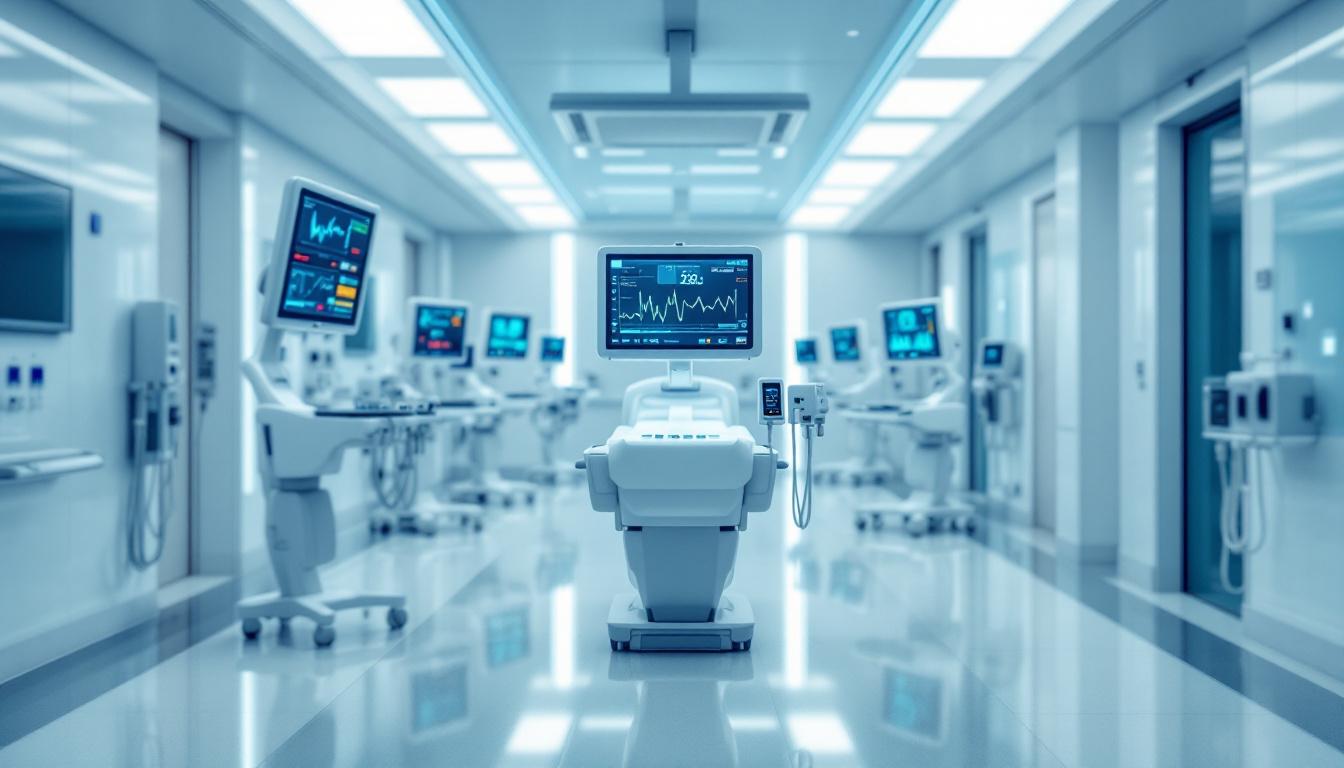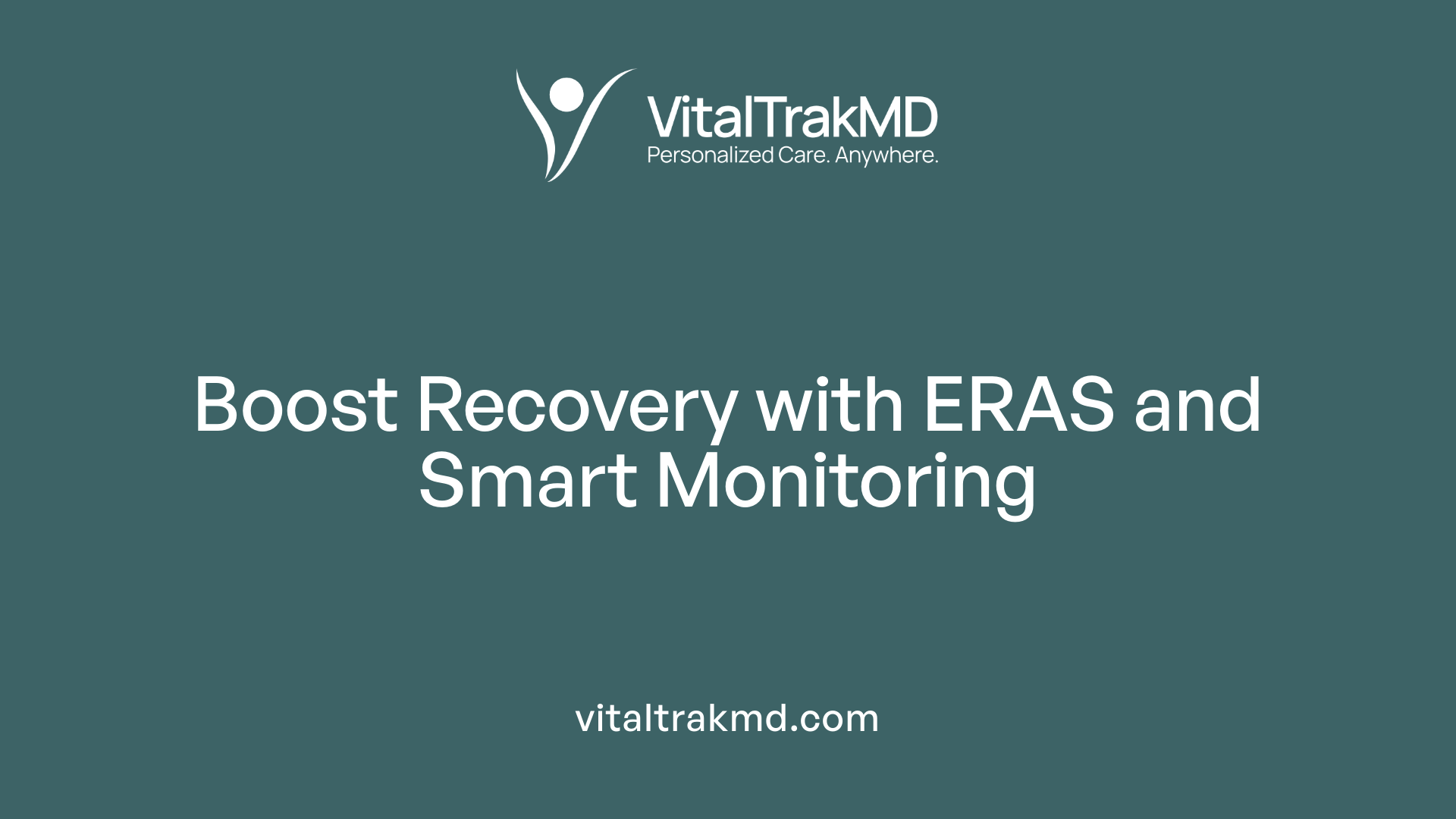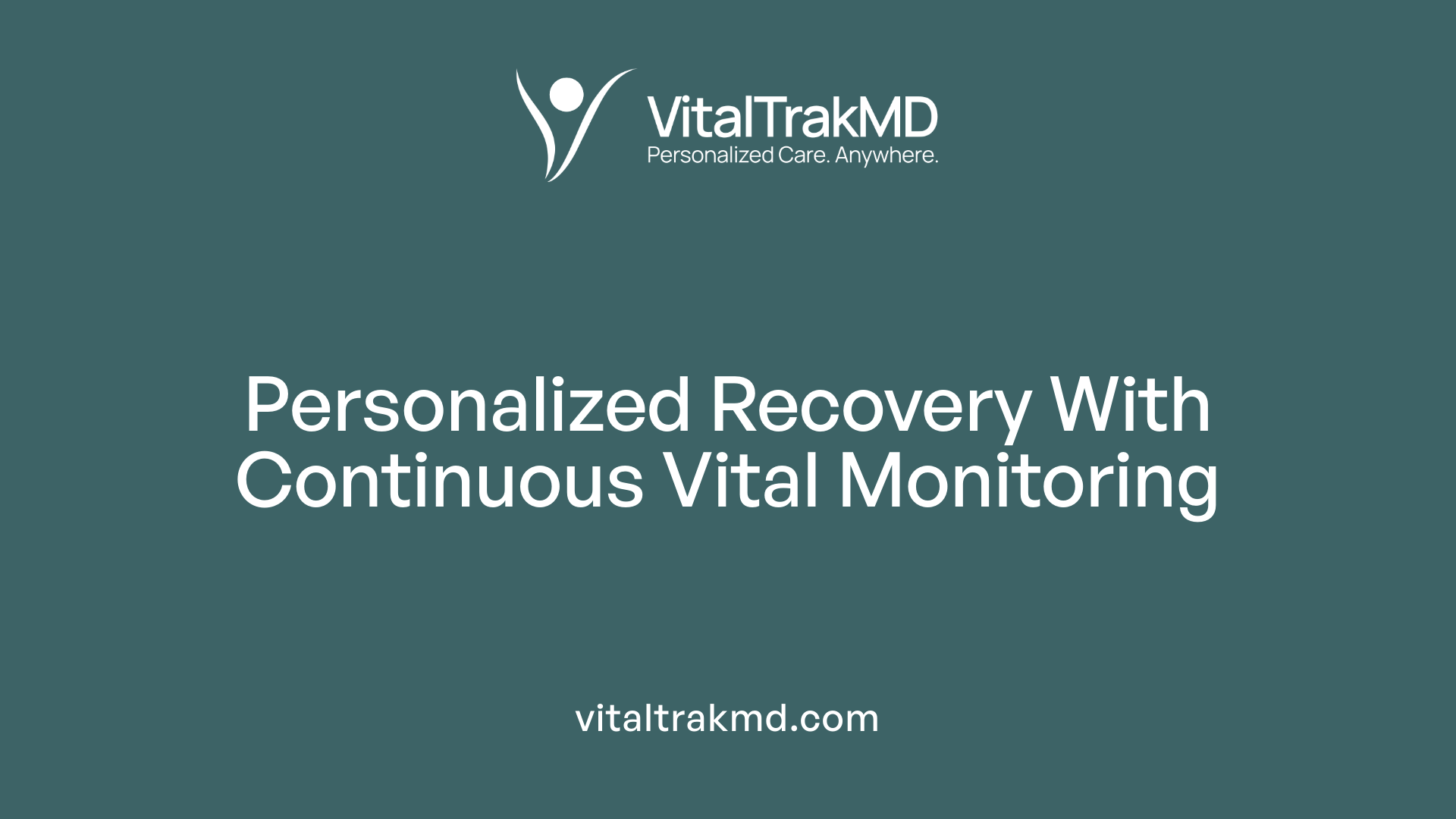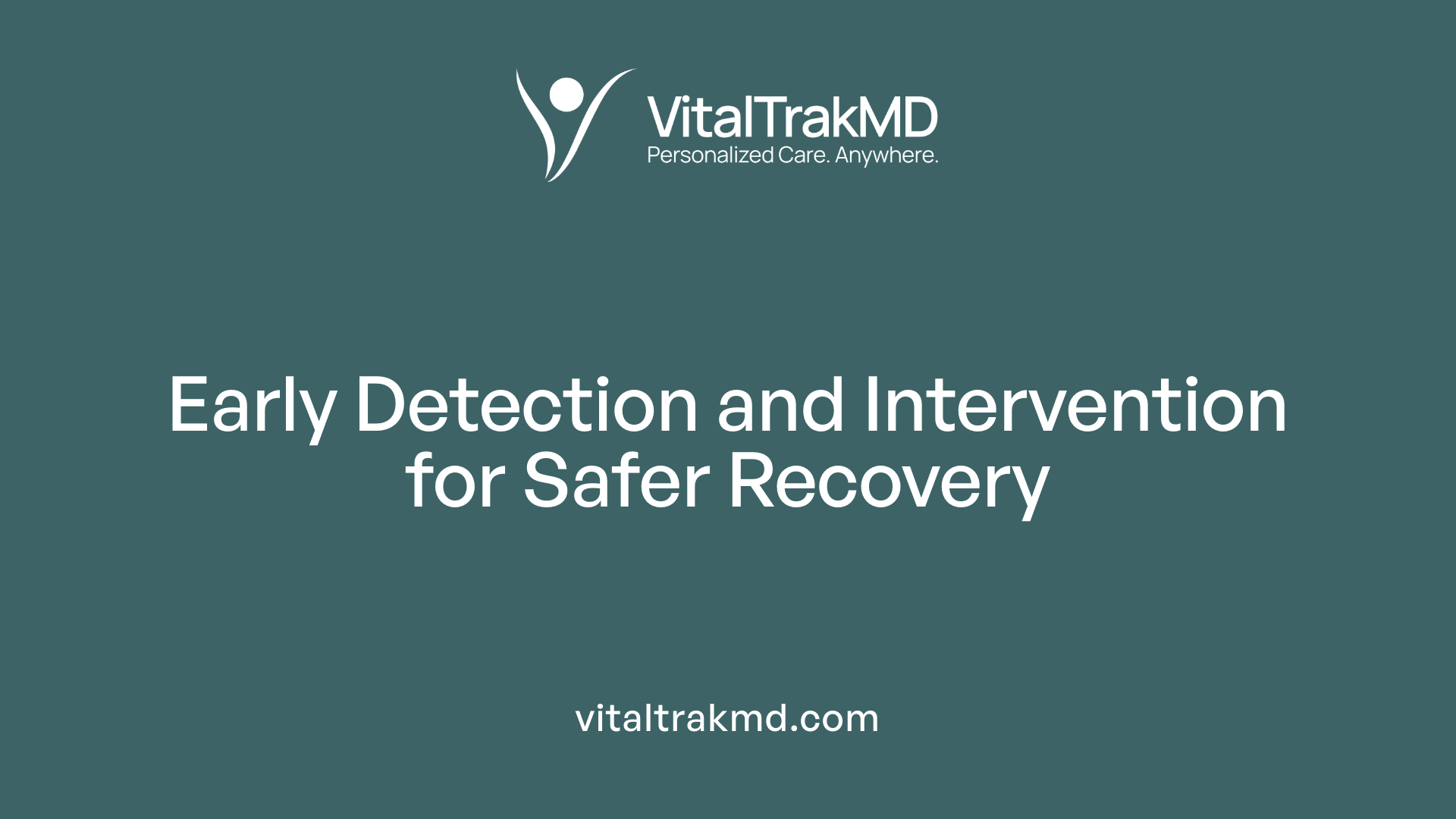How VitalTrak Fits Into Post-Surgery Recovery Programs

Introduction: The Future of Postoperative Recovery
Post-surgical recovery is a critical phase that determines long-term health outcomes. Advances in digital health technology, notably wearable monitoring devices like VitalTrak, are now transforming traditional recovery protocols. These tools facilitate continuous monitoring, early detection of complications, and personalized rehabilitation, ultimately improving patient safety, outcomes, and satisfaction.
Integrating VitalTrak into Post-Surgery Recovery Strategies

How is VitalTrak incorporated into existing recovery protocols?
VitalTrak is designed to seamlessly fit into current post-operative care routines by providing continuous monitoring of patient vital signs and functional data. It is used by physiotherapists and healthcare providers to track recovery progress, particularly in conditions like musculoskeletal pain and post-operative pain management.
The device supports individualized care through preset and customizable programs, enabling tailored rehabilitation plans. Its portability and wireless design make it suitable for use both in hospital settings and at home, aligning with modern Enhanced Recovery After Surgery (ERAS) protocols that promote early mobilization and outpatient recovery.
Furthermore, VitalTrak’s FDA and CE certification assure clinicians of its compliance with regulatory standards, encouraging its integration into post-surgical monitoring workflows.
What is the role of wearable technology in modern post-operative care?
Wearable devices such as VitalTrak play an increasingly important role in enhancing postoperative care by allowing continuous, real-time surveillance of vital signs like heart rate and respiratory rate. These devices help detect early signs of complications such as sepsis, respiratory depression, or hypotension, potentially reducing the need for frequent manual checks.
Most devices are designed to be user-friendly and comfortable, promoting high patient adherence. They enable early detection of deterioration, facilitating timely interventions which can prevent serious adverse outcomes.
In addition to vital signs, many wearables track physical activity, providing insights into mobility and functional recovery. This information supports decision-making about safely progressing activity levels and guides personalized rehabilitation.
What are the benefits of continuous monitoring in early complication detection?
Continuous patient monitoring offers numerous benefits, including the capacity to detect complications sooner than traditional intermittent checks. For example, sustained respiratory rate monitoring can alert providers to early signs of respiratory distress, enabling prompt treatment.
It also helps in identifying subtle changes in vital signs that may precede clinical deterioration, such as changes in blood pressure or heart rate, which might be missed during sporadic spot checks.
Moreover, digital platforms that centralize data from wearable devices facilitate early warning scores and alerts, streamlining clinical responses. This proactive approach can decrease ICU transfers, hospital readmissions, and overall length of stay.
While current technology faces technical challenges like data accuracy and alarm fatigue, ongoing innovations aim to improve reliability and integration within clinical workflows.
| Aspect | Benefits | Challenges |
|---|---|---|
| Continuous vital sign monitoring | Early detection, improved patient safety | Device accuracy, false alarms |
| Wearable activity tracking | Personalized rehabilitation, mobility assessment | Patient adherence, technical limitations |
| Data integration and alerts | Streamlined clinical response | Alarm fatigue, data transmission issues |
Employing wearable and remote monitoring solutions as part of post-surgical care can significantly enhance patient safety, recovery efficiency, and overall outcomes, advancing the modernization of postoperative management.
Enhancing Recovery Outcomes with ERAS and VitalTrak
 Enhanced Recovery After Surgery (ERAS) protocols are designed to improve surgical outcomes by optimizing perioperative care. These evidence-based practices focus on reducing the stress response to surgery, supporting organ function, and promoting early mobilization and nutrition. By implementing elements such as patient education, minimized fasting periods, multimodal pain management, and early feeding, ERAS helps patients recover faster, stay in the hospital for shorter durations, and experience fewer complications.
Enhanced Recovery After Surgery (ERAS) protocols are designed to improve surgical outcomes by optimizing perioperative care. These evidence-based practices focus on reducing the stress response to surgery, supporting organ function, and promoting early mobilization and nutrition. By implementing elements such as patient education, minimized fasting periods, multimodal pain management, and early feeding, ERAS helps patients recover faster, stay in the hospital for shorter durations, and experience fewer complications.
VitalTrak and similar real-time monitoring tools play a crucial role within ERAS frameworks. They provide continuous data on vital signs and physiological parameters, allowing healthcare teams to promptly detect potential issues like bleeding, infection, or respiratory depression. This immediate feedback enables early intervention, reducing the risk of deterioration.
The multidisciplinary approach of ERAS ensures consistent, coordinated care with ongoing data collection and compliance tracking. Patients benefit from personalized recovery pathways, improved safety, and greater comfort. Overall, combining ERAS protocols with smart monitoring systems like VitalTrak creates a more efficient, patient-centered recovery process, leading to better health outcomes and shorter hospital stays.
For further information, searching "ERAS protocols and digital monitoring" can provide insights into the integration of these strategies in modern surgical care.
Functional Monitoring and Personalization in Postoperative Care

How VitalTrak enables continuous vital sign assessment
VitalTrak is a digital platform designed to improve post-surgical recovery by providing continuous vital sign monitoring. It allows patients to regularly record data such as blood pressure, heart rate, and oxygen saturation from the comfort of their homes. This real-time data integration helps healthcare providers track the patient’s response to medication, physical activity, and overall recovery progress.
The system efficiently consolidates vital measurements into accessible reports, allowing clinicians to detect early signs of complications like hypotension or respiratory distress. With seamless connectivity to various medical devices, VitalTrak facilitates constant surveillance without the limitations of intermittent spot checks.
The importance of reliable, validated devices for accurate data collection
Accurate and consistent data collection is crucial for making informed clinical decisions. VitalTrak emphasizes the use of validated medical devices, such as those listed by the American Medical Association’s Blood Pressure Validated Device Listing (VDL™). Devices on this list have undergone rigorous testing to ensure that they provide reliable readings, which is especially important during home monitoring when clinical supervision is limited.
Validated devices minimize errors caused by device inaccuracies that can be caused by factors such as skin pigmentation, improper placement, or device limitations. Using certified monitors ensures that the data collected truly reflects the patient's condition, enabling timely and appropriate interventions.
Use of vital sign data for personalized rehabilitation plans
Vital sign data collected through VitalTrak plays a vital role in individualizing rehabilitation strategies. For example, consistent blood pressure readings can inform adjustments in physical activity levels or medication dosages.
Monitoring trends over time allows clinicians to tailor exercises and therapy intensity to match the patient's current capabilities, promoting safer and more effective recovery. It also helps in early detection of abnormal patterns, such as persistent hypertension or signs of infection, which may require prompt medical attention.
By integrating continuous vital sign assessment into postoperative care, VitalTrak supports personalized rehabilitation plans that adapt to each patient's evolving needs, ultimately enhancing recovery outcomes and reducing the risk of complications.
Monitoring During Recovery: Ensuring Safety and Early Intervention

How can VitalTrak be used to monitor vital signs during recovery?
VitalTrak employs wearable devices that continuously gather vital sign data such as heart rate, respiratory rate, blood pressure, and sleep activity. These sensors wirelessly transmit information to a secure, cloud-based platform accessible to healthcare professionals and caregivers.
Through real-time data streaming, VitalTrak allows for ongoing trend analysis, helping clinicians detect subtle changes indicative of potential issues early on. For example, rising heart rate or breathing irregularities can signal complications like infection or respiratory distress.
The system features smart alerts that notify caregivers immediately when vital signs fall outside pre-set thresholds. This prompt warning system enables early intervention, which is critical in preventing serious postoperative complications.
In clinical use, VitalTrak has successfully identified events such as tachycardia and tachypnea, leading to timely medical responses. Its remote access capability supports use across diverse settings—from hospital wards to home environments—enhancing continuous patient oversight.
By integrating real-time monitoring into post-surgical care, VitalTrak not only improves early detection of adverse events but also boosts patient confidence and safety during recovery.
The uses of alerts and trend analysis for early intervention
Alerts generated from sensor data are designed to resonate quickly with healthcare teams, minimizing delays in decision-making. When vital sign trends indicate deterioration—such as a rapid increase in respiratory rate or a drop in oxygen saturation—alerts trigger immediate review.
Trend analysis further helps in understanding the patient's recovery trajectory over time. Observing gradual improvements or emerging concerns allows clinicians to adjust treatment plans proactively.
This proactive approach aims to mitigate risks of severe complications like sepsis, internal bleeding, or respiratory failure, often caught only after significant deterioration with traditional intermittent checks.
Moreover, early alerts reduce the workload of healthcare providers by automating the monitoring process, allowing focus on patients with urgent needs while still maintaining continuous surveillance.
The impact on reducing complications and rehospitalizations
Continuous vital sign monitoring with systems like VitalTrak contributes to a decline in postoperative complications by enabling early detection and treatment.
Studies indicate that such technology can decrease unplanned hospital readmissions and ICU transfers by catching issues before they escalate.
Furthermore, early intervention facilitated by real-time alerts can shorten hospital stays, contributing to cost savings for healthcare systems.
Overall, integrating wearable monitor technology during recovery enhances patient safety, improves outcomes, and supports more efficient resource utilization in postoperative care.
| Aspect | Effect | Additional Details |
|---|---|---|
| Early detection of complications | Reduces severity of adverse events | Timely alerts for critical vital sign changes |
| Trend analysis | Supports proactive care | Observes recovery patterns over time |
| Rehospitalization rate | Decreases readmissions | Early intervention prevents escalation |
| Patient safety | Increases confidence | Continuous monitoring provides ongoing reassurance |
| Healthcare efficiency | Optimizes resource use | Automated alerts reduce staff workload |
Conclusion: Pioneering Safer, Smarter Postoperative Care
The integration of digital monitoring tools like VitalTrak into post-surgical recovery programs signifies a major step forward in patient-centered, safe, and effective healthcare. Continuous vital sign monitoring, early detection of complications, and personalized care plans are key benefits that enhance recovery outcomes. As technology advances and validation studies confirm device accuracy and reliability, the role of tools like VitalTrak is set to become integral to standard postoperative care, supporting clinicians and empowering patients throughout their recovery journey.
References
- Wearable devices to monitor recovery after abdominal surgery
- VitalTrack Pro Tens Machine
- The Importance of Respiratory Rate Monitoring | Clinical View
- Continuous Blood Pressure Monitoring in Patients Having Surgery
- Digital App to Enhance Patient Preparation and Recovery from ...
- Comprehensive Post-Surgical Rehabilitation: Your Path to Recovery
- Why Post-Operative Vital Sign Monitoring is Critical
- BP monitoring you can count on—list of validated devices grows
- Postoperative care 1: principles of monitoring postoperative patients
- Can Remote Patient Monitoring Improve Post-Surgical Care and ...
Recent articles
Want to Feel Better and Live Healthier?
Join hundreds of patients taking control of their health with personalized care that fits their life – not the other way around.
Rated 4.8/5 by 32+ customers







